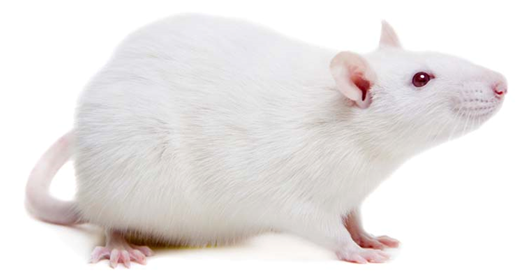
The Lewis rat (LEW rat) is a widely used inbred strain of laboratory rat known for its unique genetic and immunological characteristics. It has become an invaluable model in biomedical research, particularly in studies related to autoimmune diseases, transplantation, and immunology. Below is a detailed explanation of how Lewis rats are produced and their applications in bioresearch.
1. Production of Lewis Rats
Lewis rats were first developed in the early 20th century through selective inbreeding. Here’s how they are produced and maintained:
Genetic Basis: The Lewis rat strain was derived from the Wistar rat stock by Dr. Lewis in the 1950s. It is characterized by its albino coat color (a/a genotype) and specific genetic traits, including a unique major histocompatibility complex (MHC) haplotype (RT1l), which influences immune responses.
Breeding Strategy: Lewis rats are maintained through strict inbreeding to ensure genetic homogeneity. This minimizes variability in experimental outcomes, making them ideal for controlled studies.
Housing and Care: Due to their susceptibility to infections and autoimmune conditions, Lewis rats are typically housed in specific pathogen-free (SPF) environments. This ensures their health and the reproducibility of research results.
2. Applications in Bioresearch
Lewis rats are highly versatile and are used in a wide range of biomedical research areas. Below are their primary applications:
A. Autoimmune Disease Research
Experimental Autoimmune Encephalomyelitis (EAE): Lewis rats are highly susceptible to EAE, a model for human multiple sclerosis. This makes them ideal for studying the mechanisms of autoimmune demyelination and testing potential therapies.
Rheumatoid Arthritis: They are used to model rheumatoid arthritis through the induction of collagen-induced arthritis (CIA), providing insights into disease progression and treatment.
Inflammatory Bowel Disease (IBD): Lewis rats are used to study IBD, including Crohn’s disease and ulcerative colitis, due to their heightened immune reactivity.
B. Transplantation Studies
Graft Acceptance and Rejection: Lewis rats are widely used in transplantation research due to their predictable immune responses. They help scientists understand the mechanisms of graft survival and rejection, as well as the role of immunosuppressive therapies.
Organ Transplantation: They are used to study kidney, heart, and liver transplantation, providing valuable insights into host-graft interactions and immune tolerance.
C. Immunology and Vaccine Development
Immune Tolerance: Lewis rats are used to study how the immune system distinguishes between self and non-self, which is critical for understanding autoimmune diseases and transplant rejection.
Vaccine Testing: Their robust immune responses make them suitable for evaluating the efficacy and safety of vaccines, particularly for infectious diseases.
D. Metabolic and Endocrine Research
Diabetes: Lewis rats are sensitive to streptozotocin (STZ)-induced diabetes, making them a valuable model for studying type 1 diabetes and testing antidiabetic therapies.
Obesity: They are also used to study diet-induced obesity and metabolic syndrome, providing insights into the genetic and environmental factors contributing to these conditions.
E. Cancer Research
Tumor Models: Lewis rats are used to study tumor biology, including the growth and metastasis of cancers such as lymphoma and fibrosarcoma. Their genetic predisposition to certain tumors makes them useful for testing anticancer therapies.
3. Unique Characteristics of Lewis Rats
Albino Coat Color: Lewis rats have a uniform albino coat due to the a/a genotype, which is useful for visual identification in experiments.
High Sensitivity to Autoimmune Induction: Their genetic makeup makes them highly susceptible to autoimmune diseases, which is a key feature for research in this field.
Predictable Immune Responses: Their consistent immune reactions make them ideal for transplantation and immunology studies.
4. Conclusion
Lewis rats are a cornerstone of biomedical research, particularly in the fields of autoimmune diseases, transplantation, and immunology. Their unique genetic and immunological traits make them invaluable for studying complex biological processes and developing new therapies. However, their care requires meticulous attention to housing conditions and experimental design to ensure reliable and reproducible results.